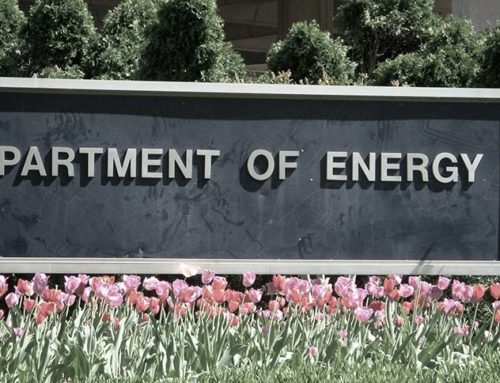The President today signed into law legislation approving a 700-mile wall along the U.S. border with Mexico. On its way out of town last week, Congress voted approved the “Secure Fence Act” which approves the wall’s construction, and separately included a $1.2 billion down-payment in the homeland security spending bill to get the job moving. Problem is, keeping illegal immigrants out with a wall is a little like eating soup with a fork.
According to the Wall Street Journal, walling off 700 miles along the Mexican border will cost an estimated $7 billion, not to mention the maintenance and other operational costs. And when Congress gave the go-ahead to the Great Wall of Mexico it also approved the study of a wall along the Canadian border. No ideas yet on what that might cost, but it’s likely to look a lot like Paris Hilton’s credit card bill after a big shopping spree—a tab you’re not going to want to pick up!
The miniature version of Congress’ border wall—a 14-mile long, 15-foot high, rigid, steel-mesh fence in San Diego County—was started in 1996 and has yet to be completed. It has already cost $35 million and the meter is still running. Despite its smaller size, the relative ease of the terrain on which the wall is being built, and that the government waived all environmental regulations, it is expected to cost an additional $39 million and take an unknown number of years to complete that build.
In addition to the project’s staggering cost, there are certainly significant questions about how effective a strategy it is to build a wall to seal the borders. Arizona Governor Janet Napolitano (D) sums it up: “Show me a 50-foot wall and I'll show you a 51-foot ladder.” As currently approved, the wall will close only 700 miles of our 2,000-mile border with Mexico; as currently funded, less than 300 miles. This will leave huge holes along our border, so traffic stopped by today’s walls will just pop up somewhere else tomorrow.
Aside from questions about whether a wall will keep people out, there are obstacles to getting it built in the first place. Veteran border agents who know these areas better than anyone point to several challenges—rugged desert, creek beds prone to flash flooding, and difficult mountainous terrain—that will make any wall extremely difficult, if not downright impossible, to construct.
What we found most interesting about this bill is that building this wall is not even the primary mandate that Congress has established. This bill effectively declares that the Secretary of Homeland Security has 18 months to achieve “operational control”—defined as stopping all unlawful entries into the U.S.—of the entire border (Canadian, Mexican, and maritime).
Consider the absurdity of mandating that the Secretary stop all illegal immigrants coming into the U.S. and then giving him only enough resources (and requiring him) to build less than 300 miles of fence (along more than 5,000 miles of border). It’s like handing somebody a ping-pong paddle and telling him to go beat Andre Agassi.
Another amusing provision can be found in the homeland security bill, making it illegal to tunnel under our borders. Like that’s going to stop anybody. It’s hard to imagine that somebody illegally crossing the border is going to think twice because Congress has declared it illegal. But that’s what our immigration policy has been reduced to.
Also of concern is the potential impact on the private property rights of those that own land where the wall will be built. In Texas, for example, a 200-mile stretch of fence will block farmers, ranchers, recreation-based businesses, and others from accessing the Rio Grande River. Unless they bring their own ladders, of course.
Far too often on Capitol Hill political expediency and emotive response win out over serious policy debate and the search for real solutions. This case seems little different. When both sides were unable to come up with comprehensive immigration reform, they piecemealed the parts of the bill that members thought would look best in press releases before hitting the campaign trail – regardless of cost, or whether it will actually work.
For more information, contact Steve Ellis at (202)-546-8500 ext. 126 or e-mail .










